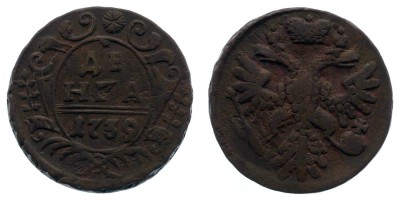British guinea is considered one of the oldest gold coins in the world, with a floating rate. Guinea is known as the main gold coin of the kingdom. The minting of gold coins in the UK begins with the manufacture of guineas. The first coins are made of precious metal, which is mined in Guinea. The name of the banknote receives from this West African colony.
The value of the coin varies, depending on the price of gold. The initial cost of a guinea is 20 shillings, then due to rising gold prices, it increases to 21 ½ shillings. At the end of the XVII century, the cost of a guinea reaches 30 shillings, then decreases again. On the advice of Isaac Newton, the price of the coin was fixed, and is 21 shilling. Throughout the life of the guinea, the gold content remains high, at least 90%. In 1739, the United Kingdom minted three types of gold coins:
- 1 guinea;
- 1 guinea, with a different design obverse;
- 2 guineas.
On the obverse of 1 guinea, weighing 8.35 g, the head of King George II is depicted, in a wreath, looking left. On the reverse is a coat of arms in the form of a shield, with a crown on top. On the one hand, three moving lions are depicted, which personify belonging to England. Nearby, in a frame - standing lion. This is the personification of Scotland. The image of the harp on the shield is a symbol of Ireland.
Another banknote, face value of 1 guinea, has the same weight, size, and similar design. The difference is that for the front side, a portrait of the younger King George II is used. On the obverse, under the image of the monarch, there are signs of E.I.C., which indicate where the gold came from for minting. For this coin, 1 guinea, issue of 1739 is the East India Company.
Coin 2 guineas, weighing 16.7 g, is made out in a similar way. It depicts a portrait of the king, as on the first coin, where George II is older. The sign of the origin of gold on the coin is missing. These inscriptions were not printed on all coins, and the year 1739 was the last year of the application of these symbols.
Guinea is considered one of the symbols of the UK monetary system, and has been used as a means of payment for almost two centuries. In the 20th century, a coin sometimes plays the role of a calculated monetary unit at auctions.
Showing 1 to 1 of 1 (1 Pages)
 Russian
Russian English
English Deutsch
Deutsch Spanish
Spanish Português
Português


